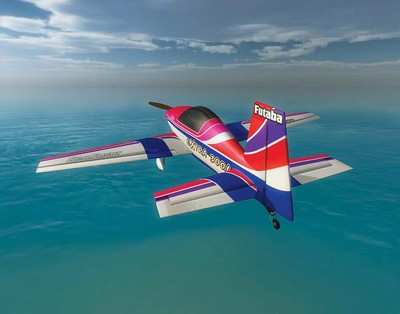Contributing To The Accident Was The Pilot’s Use Of Methamphetamine...
Location: Boulder City, Nevada Accident Number: WPR22FA240
Date & Time: July 3, 2022, 08:49 Local Registration: N343BH
Aircraft: Extra Flugzeugbau GMBH EA300/L Aircraft Damage: Destroyed
Defining Event: Aerodynamic stall/spin Injuries: 1 Fatal
Flight Conducted Under: Part 91: General aviation - Personal

Analysis: The pilot departed on a local flight to perform low-altitude maneuvers in a nearby desert valley. The pilot flew into a gap between ridgelines and performed maneuvers that consisted of flying low through the valley and then performing a turn and climb maneuver to fly in the opposite direction. The maneuvers were similar to aerobatic maneuvers called a wingover, in which the airplane makes a steep climb followed by a turn at the top of the climb using the rudder and a descent flying back in the opposite direction from which the maneuver began. If the rudder turn is executed right at the initiation of a stall, the maneuver is known as a stall turn or a hammerhead.
Three turn reversals were accomplished. On the first turn maneuver, the climb rate was nearly 15,000 fpm and the descent rate more than 10,000 fpm. Additionally, the load factor peaked about 3 g. The second turn maneuver was similar to the first but slightly less aggressive. On the third and final turn maneuver, when the accident occurred, the climb rate was about 6,500 fpm and the descent rate was about 6,800 fpm. The roll angles exceeded 90° at the peaks of the maneuvers. The airplane’s airspeed was close to the stall speed at the peak altitude of the first and last turn maneuvers.
According to a witness, the pilot planned to perform the flight maneuvers that morning while a ground photo shoot was taking place. On the final flyby, two witnesses observed the airplane fly overhead and pull up in a climb and subsequently enter a spin towards the ground. The airplane’s engine sounded normal during the flyby maneuvers.
A video taken by a witness showed the airplane performing the low altitude flybys near or below the ridgelines and then enter the vertical turn reversals maneuvers. On the final turn maneuver, the airplane went temporarily out of view, and when back in view, it was in a steep nose-down descent with rotation, consistent with a spin. Impact marks at the accident site, witness observations, review of the flight data, and the video, were all consistent with the pilot losing control by exceeding the critical angle of attack of the airplane during a turn climb maneuver and entering a spin. In addition, examination of the airplane wreckage revealed no evidence of preimpact failures or malfunctions that would have precluded normal operation.

On the last turn maneuver, the pilot experienced a load factor of about 2 g that was the least amount of g sustained during the turn maneuvers performed by the pilot. Referencing the Federal Aviation Administration (FAA) Advisory Circular (AC) 91.61 on g effects; 2 g was substantially below the threshold and minimum range of grey out, which was the first effect of the g-forces that would affect the pilot. Therefore, it was likely that the pilot did not experience any adverse effects (greyout, blackout, or incapacitation) from the g load during the final turn maneuver.
The FAA Code of Federal Regulations (CFR) Title 14. 91.303 Aerobatic flight, states “No person may operate an aircraft in aerobatic flight - below an altitude of 1,500 ft above the surface.” The pilot was not in compliance with this requirement, which reduced his recovery margin. Toxicology testing revealed that the pilot had used methamphetamine at some time before the accident. Methamphetamine and its metabolite amphetamine were detected at high concentration in the urine sample, and it was likely that the pilot was still under the influence and experiencing some effects of methamphetamine while flying. Pseudoephedrine and phenylpropanolamine, which are precursors for illicit production of methamphetamine, were detected in the urine. This further supports the evidence of recreational and illicit use of methamphetamine by the pilot. Methamphetamine effects include impaired judgment, impulsivity, and increased risk taking. Therefore, the effects from the pilot’s use of
methamphetamine likely contributed to the accident.
Probable Cause and Findings: The National Transportation Safety Board determines the probable cause(s) of this accident to be -- The failure of the pilot to maintain control of the airplane by exceeding the airplane’s critical angle of attack while maneuvering in a turning climb at a low altitude, which resulted in an
aerodynamic stall and spin from which the pilot was unable to recover. Contributing to the accident was the pilot’s use of methamphetamine and decision to perform aerobatics below the required minimum altitude.
 ANN's Daily Aero-Linx (12.12.25)
ANN's Daily Aero-Linx (12.12.25) ANN's Daily Aero-Term (12.12.25): Land And Hold Short Operations
ANN's Daily Aero-Term (12.12.25): Land And Hold Short Operations ANN FAQ: How Do I Become A News Spy?
ANN FAQ: How Do I Become A News Spy? NTSB Final Report: Cirrus Design Corp SF50
NTSB Final Report: Cirrus Design Corp SF50 Airborne 12.08.25: Samaritans Purse Hijack, FAA Med Relief, China Rocket Fail
Airborne 12.08.25: Samaritans Purse Hijack, FAA Med Relief, China Rocket Fail




